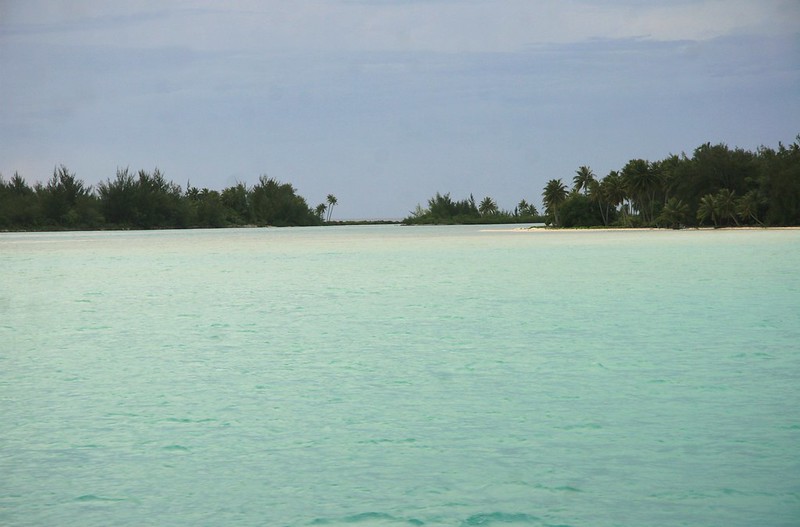The ancient Polynesians, hailed as some of history’s greatest navigators, charted vast expanses of the Pacific Ocean long before the advent of modern navigation tools. Their incredible journeys, spanning thousands of miles across the world’s largest ocean, were achieved using a profound understanding of natural elements, a mastery of indigenous navigation techniques, and an intricate oral tradition. This article delves into how these remarkable seafarers accomplished what many in their time believed impossible, exploring their navigational methods, tools, cultural significance, and lasting legacy.
1. The Pacific Ocean: An Open-Ended Challenge
A Vast and Unforgiving Frontier
The Pacific Ocean, covering more than 63 million square miles, posed unique challenges for ancient navigators. With no visible landmasses for extended stretches and frequent extreme weather conditions, it required unparalleled skills to traverse its vastness.
- Geographical Challenges:
- Sparse islands separated by thousands of miles.
- Strong ocean currents and trade winds.
- Sudden tropical storms and changing weather patterns.
The Motivation to Explore
For Polynesians, exploration was not just about survival but also about discovery, expansion, and cultural identity.
- Social Reasons: Population growth and resource scarcity pushed communities to seek new lands.
- Cultural Beliefs: Polynesians believed in the spiritual significance of their voyages, with the ocean often regarded as a living entity to be respected and understood.
The Canoe: A Marvel of Engineering
Polynesian voyaging canoes, known as waka, were meticulously designed for long-distance travel. These double-hulled canoes were stable, fast, and capable of carrying large groups of people, along with essential supplies like food, water, and tools.
2. Celestial Navigation: Reading the Night Sky
Stars as Roadmaps
The ancient Polynesians used the stars as a primary tool for navigation, memorizing their positions and movements to guide their journeys.
- Star Paths: Navigators relied on “star lines,” mental maps connecting specific stars to directional bearings.
- Constellations: Groups of stars, such as Orion’s Belt and the Southern Cross, were used to mark specific routes.
Techniques of Star Navigation
- Rising and Setting Points: Navigators observed the horizon to track where specific stars rose and set, using these points to establish bearings.
- Seasonal Shifts: Polynesians understood the seasonal movement of stars, allowing them to plan voyages during optimal periods.
- Stellar Altitude: Measuring the angle of stars above the horizon helped estimate latitude.
The Navigator’s Memory
Star maps were not written down but memorized and passed down through generations. This oral tradition required years of training and a deep connection to the environment.
3. Wayfinding with Nature: A Holistic Approach
Ocean Swells and Currents
Polynesian navigators developed an intimate understanding of ocean swells, using them as a constant compass.
- Wave Patterns: By observing the direction and frequency of waves, navigators could determine the general direction of islands.
- Interference Patterns: Unique wave patterns, created by islands disrupting swells, provided clues to nearby land.
Birds and Marine Life
Bird behavior played a critical role in navigation:
- Frigatebirds and Terns: These birds never stray far from land, so their flight paths and morning/evening movements were crucial indicators.
- Fish and Marine Species: Navigators identified specific fish species that were unique to certain areas, helping them approximate their location.
Cloud Formations
Polynesians used cloud formations as a navigational tool:
- Island Shadows: Clouds often cluster over islands due to rising warm air, signaling nearby land.
- Reflection on Water: The color of the water below reflected by the clouds could indicate reefs, lagoons, or open ocean.
4. Cultural Significance of Navigation
Navigators as Custodians of Knowledge
Polynesian navigators, or wayfinders, were highly respected figures within their communities. Their knowledge was sacred, blending practical skills with spiritual understanding.
- Rituals and Ceremonies: Before voyages, navigators participated in rituals to seek guidance and protection from ocean deities.
- Teaching and Legacy: Navigation knowledge was passed down through rigorous apprenticeships, often taking decades to master.
Connection to Mythology
Polynesian myths often depicted navigators as heroes or demigods, emphasizing the cultural importance of exploration.
- Māui the Explorer: In Hawaiian legend, Māui used his magic hook to pull islands from the sea, symbolizing the spirit of discovery.
5. Tools and Techniques: Beyond Stars
Etak System: A Mental Grid
Polynesians used the etak system, a conceptual framework where islands or stars were reference points on a moving mental grid. This innovative system allowed navigators to maintain direction without physical maps.
Observational Markers
- Color of the Sea: Variations in sea color indicated depth, reefs, or underwater features.
- Driftwood and Debris: Floating vegetation or driftwood signaled proximity to land.
Physical Tools
- Shell Maps: Some islands used maps made of shells and sticks to represent wave patterns and island locations.
- Sun and Shadows: Daytime navigation relied on the position of the sun and its reflection on the water.
6. Voyages of Discovery: Achievements and Legacy
Major Expeditions
Polynesians voyaged thousands of miles to settle islands like Hawai’i, New Zealand, and Easter Island.
- Hawaiian Islands: Reached around 500-800 CE using the North Star as a guide.
- New Zealand (Aotearoa): Settled between 1200-1300 CE, marking the southernmost point of Polynesian exploration.
The Mystery of Easter Island
Reaching Rapa Nui (Easter Island) showcased the extraordinary capabilities of Polynesian navigators, covering nearly 2,300 miles from their starting point.
Rediscovery of Techniques
The 20th-century Polynesian voyaging renaissance revived traditional methods. Modern navigators like those aboard the canoe Hōkūleʻa demonstrated that ancient techniques remain effective even today.
7. Modern Recognition and Conservation
Cultural Revival
Polynesian navigation techniques are now celebrated as a cornerstone of Pacific heritage:
- Voyaging Societies: Organizations like the Polynesian Voyaging Society preserve and teach traditional navigation skills.
- World Heritage Recognition: UNESCO has acknowledged Polynesian voyaging as an intangible cultural heritage.
Scientific Validation
Studies have validated the accuracy of Polynesian methods, demonstrating their complexity and effectiveness compared to modern tools.
Lessons for Sustainability
The Polynesians’ deep connection to the ocean offers valuable lessons for modern sustainability. Their respect for natural resources and understanding of ecological balance inspire contemporary conservation efforts.
Conclusion
The ancient Polynesians’ mastery of open-ocean navigation is a testament to human ingenuity, resilience, and adaptability. By blending observation, cultural wisdom, and an unyielding spirit of exploration, they charted paths across the vast Pacific, leaving a legacy that continues to inspire. Their achievements remind us of the deep bond between humanity and nature, emphasizing the importance of preserving this heritage for future generations.
As the world faces modern challenges like climate change and ocean degradation, the lessons of the Polynesians resonate more strongly than ever, urging us to navigate the future with the same respect for our environment and sense of wonder.



